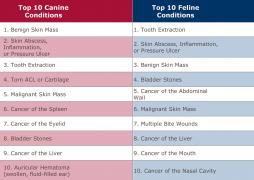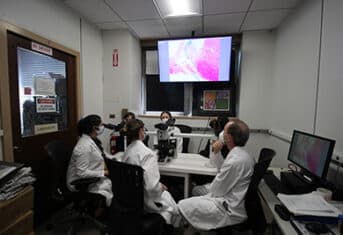Avoiding the Knife: Preventing Pet Surgeries

Avoiding the Knife: Preventing Pet Surgeries
At The Animal Medical Center, our board certified surgeons and neurologists perform approximately 1,500 surgeries each year. A recently released pet insurance study completed in 2012 listed the top ten surgery claims for both dogs and cats:
Since none of us want our pets to be subjected to the difficulties most surgeries pose, I will devote this blog to suggestions on how to avoid some of the most common canine and feline surgeries.
Tooth extractions
Topping the surgery list for cats and coming in at number three for dogs were tooth extractions. Keeping your pets’ teeth healthy means daily brushing and annual dental cleanings. The American Veterinary Dental College website provides good information about home dental care in dogs and cats. Remember, doggy breath often means periodontal disease, so if your pet has smelly breath, see your veterinarian for treatment before extractions become necessary.
Skin abscess, inflammation and pressure ulcers
This list of skin conditions ranks number two as a reason for surgery in both dogs and cats. Pressure ulcers generally occur in older dogs with limited mobility. Padding, padding and more padding will help prevent pressure ulcers on their elbows and thighs. Investigate orthopedic beds for your dog and try to keep him from laying on hard surfaces like the bathroom tile floor which can aggravate pressure sores. Promote mobility in your dog through regular exercise and management of arthritis with diet and medications.
Feline bite wounds
When I was a veterinarian in a more suburban area, we treated cat bite wounds on a daily basis. Preventing cat bite injuries is as simple as keeping your cat indoors. Cat bites not only cause wounds which can become abscesses, but cat bites transmit the feline immunodeficiency virus and possibly blood parasites as well. Priceless is how I define the value of keeping your cat indoors and healthy.
Aural hematoma
The tenth most common surgery in dogs was to repair an aural (ear) hematoma. Cats can develop aural hematomas too, just not as commonly as dogs. This condition is essentially a blood blister inside the ear flap. Blood accumulates in the ear flap when your dog incessantly shakes his head or scratches her ears. Usually, the shaking and scratching is in response to an allergy or an ear infection. If you see this behavior, check inside the ear for redness or discharge. See your veterinarian immediately to treat the cause of the shaking and scratching to prevent the development of an aural hematoma.
While some surgeries are unavoidable, these are prime examples of how a visit to your veterinarian for routine preventive care can help your pet avoid surgery.































